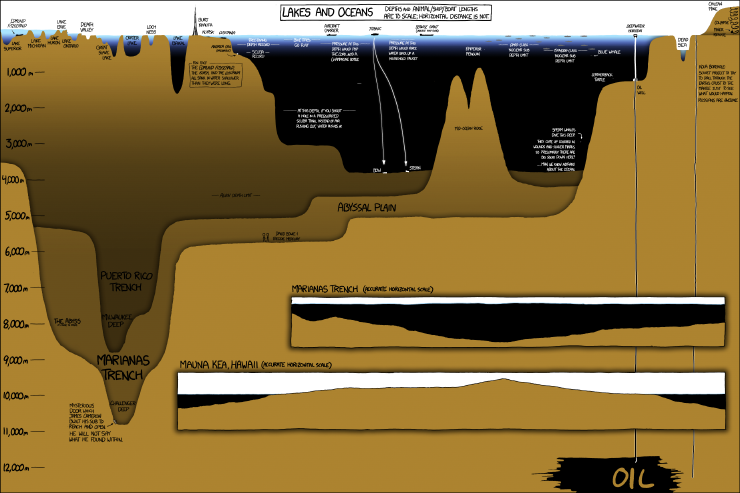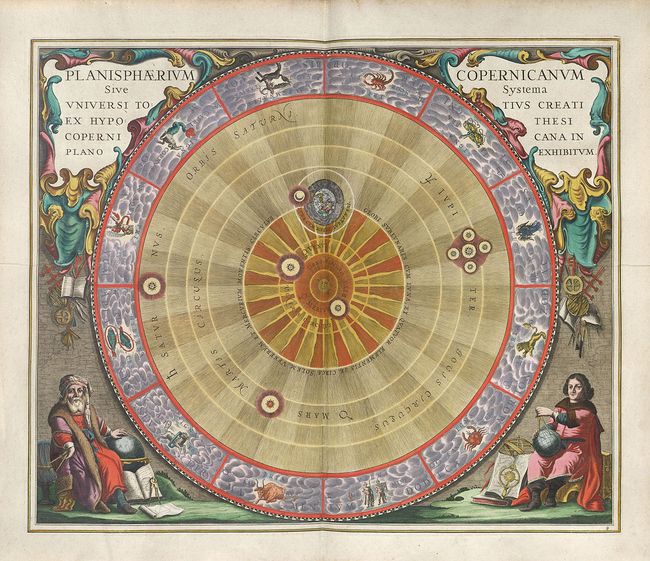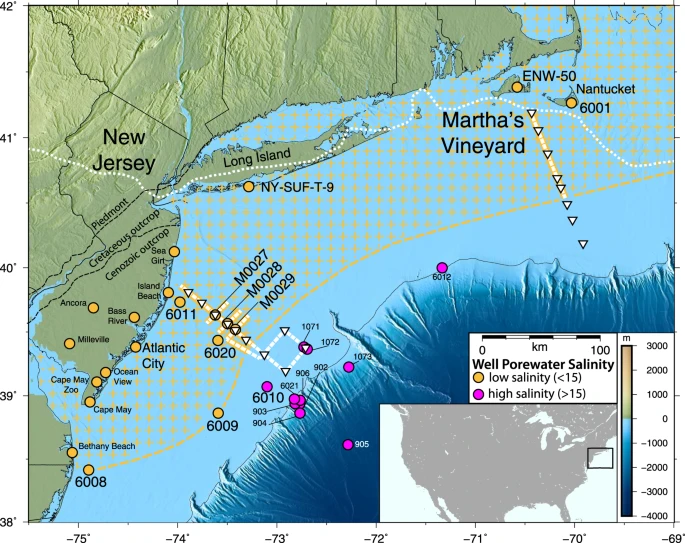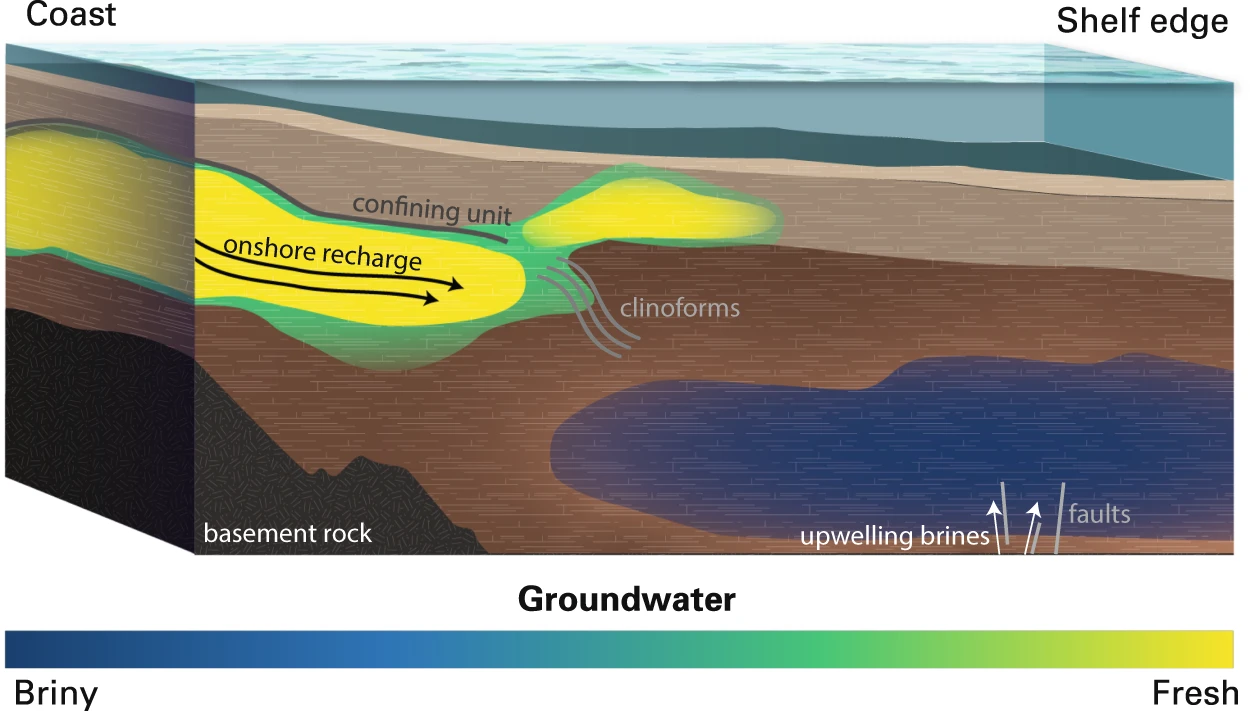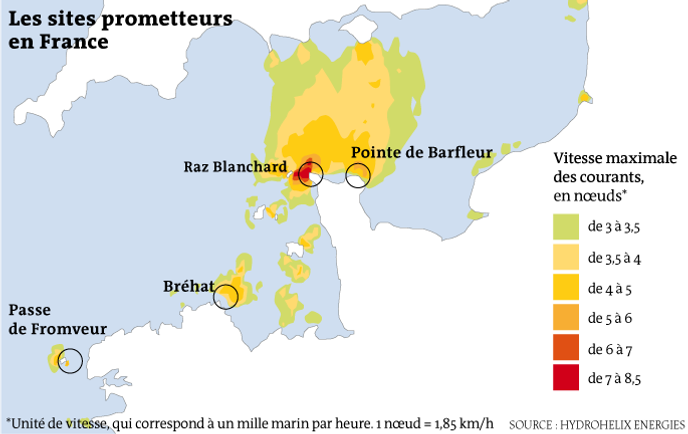His Life's workCopernicus is shown at work in a 20th-century painting by Jean-Léon Huens, commissioned by the National Geographic Society.
From National Geographic by Ernest Kowalczyk
This secretive astronomer devoted his entire life to sun-centered cosmic theories as larger questions of faith were dividing Europe nearly 500 years ago.
Rumors were circulating in the 1530s that
Nicolaus Copernicus, a cathedral cleric in a small Polish city, had written a revolutionary theory on the cosmos.
To the frustration of many, however, the secretive clergyman was refusing to publish it.
Curiosity came from many quarters.
One letter, written in 1536, begged for more information.
It praised Copernicus’s “new theory of the Universe according to which the Earth moves and the Sun occupies the basic, and hence, central, position.” Its author was Cardinal Nikolaus von Schönberg, a prince of the Catholic Church.
By placing the sun at the center, Copernicus’s idea overturned the ideas devised by the second-century astronomer Ptolemy.
In Ptolemy’s theory the sun and planets orbited the Earth, which was regarded as the orthodox model across the Christian world.
Through decades of work, Copernicus had slowly and carefully found a new way of organizing the heavens, but his reticence kept these new ideas isolated from the public, who could only speculate about them.
A man of both science and faith, Copernicus lived during a time of great change in Europe.
A new flowering of humanist thought was spreading throughout the continent, as scholars and artists looked back to the classical era and brought its influence to bear on art, architecture, literature, politics, and science.
After Martin Luther published his Ninety-Five Theses in 1517, a religious revolution began that would roil the Catholic Church and form new denominations.
Throughout all this tumult, Copernicus held fast at the center, methodically crafting his own astronomical revolution.
Pope Gregory XIII presides over discussions for a new calendar. 16th-century painting
Photograph by Oronoz / Album
A century before Galileo’s persecution, the church’s attitude to- ward astronomy was more open.
The Julian calendar, then in use, had become so inexact that it fell out of time with the seasons. Copernicus submitted a statement to a 1512-16 council convened to address the problem, in which he called for more accurate observations.
A new “Gregorian” calendar with leap years was introduced under Pope Gregory XIII in 1582 and is still in use today.
A Renaissance man
Copernicus was born Mikolaj Kopernik in 1473, in Torun, Poland.
(Following the custom among scholars in the Renaissance, he later latinized his name.) A major port on the Vistula River, Torun was part of a loose grouping of rich, northern trading cities known as the Hanseatic League.
Copernicus’s father was a merchant, and historians speculate that he and his family dealt in copper, an association which gave rise to the family name.
When Copernicus was 10 years old, his father died, and he went to live with his mother’s brother, Lucas Watzenrode.
Later appointed the Bishop of Warmia in northern Poland, Watzenrode became an important patron to his nephew.
(See also:
How table manners as we know them were a Renaissance invention.)
Ptolemy, whose venerated Earth-centered system was challenged by Copernicus,
is depicted in this 1476 painting by Pedro Berruguete.
photograph by Bridgeman / ACI
Copernicus began his university studies in 1491 at the Academy of Krakow (today the Jagiellonian University), which was then attracting some of Europe’s finest minds in mathematics and astronomy.
Cosmopolitan Krakow, full of merchants and intellectuals, was an exciting place to receive an education.
Reports of startling discoveries of new lands across the Atlantic by a Genoese sailor, Christopher Columbus, and the new humanist teachings of the Renaissance, were arriving in Poland from southern Europe.
Krakow was the adoptive home of the flamboyant Italian scholar Filippo Buonaccorsi, secretary to the Polish king and tutor to his children.
After several years, Copernicus was drawn to Italy, the epicenter of humanist learning at the time.
Whatever diffidence he later showed in his scientific theories, Copernicus did not lack funds or time to pursue a solid student career there.
In 1497 his uncle appointed him a canon at the cathedral of Frombork in his own diocese, even though Copernicus had begun his Italian studies a year before.
The position gave him ample financial security.
Well over a decade would pass before the absentee canon took up his duties on the chilly shores of the Baltic; in the interim, Copernicus dedicated himself to university life, first at Bologna, then at Padua, finally emerging as a doctor from the small university of Ferrara in 1503.
Higher education in this period was much more far-ranging than the specialism of a modern university.
His studies included the intricacies of civil and church law, deemed essential for a high-ranking career in the clergy.
In addition, Copernicus immersed himself in medicine and mathematics.
This pairing was regarded as natural, epitomized in the 16th-century humanist scholar Jakob Milich, who served as both a professor of mathematics and anatomy.
In his later career Copernicus would also be known as much as a physician as a mathematician.
Another discipline that intrigued Copernicus was the study of the stars, which encompassed both astronomy and astrology.
Today astronomy is regarded as a science, based on observation, while astrology—the idea that heavenly bodies affect the health and fortunes of people— is not.
In Copernicus’s time, however, scholars made no clear-cut distinction between the two.
Bologna University’s astronomer, for example, Domenico Maria de Novara, was tasked with providing astrological predictions for the city’s rulers and nobility.
Novara proved to be an important influence on the young Polish stargazer.
For a while, Copernicus lodged with him, and the two scholars made observations together.
The invention of the telescope would not take place for over a century, so the two men relied on naked-eye observation, using their knowledge of Greek to consult treatises translated from Arabic, or the ancient classical works, such as the writings of Ptolemy.
Some of Ptolemy’s assertions were already being questioned by Novara.
He introduced Copernicus to the work of Johann Müller, known by his humanistic sobriquet Regiomontanus, another skeptic of the Ptolemaic model.
On March 9, 1497, together with Novara, Copernicus made his first known astronomical observation: At 11 p.m.
both watched as the moon briefly eclipsed a distant star, Aldebaran, an event that cast doubt on Ptolemy’s theory of the distance of the moon from the Earth.
The idea that the Sun was fixed in the center of the cosmos was starting to take hold in Copernicus’s mind.
The Copernican Planisphere, illustrated in 1661 by Andreas Cellarius.
A theory evolves
In 1503 Copernicus returned north to his uncle’s diocese in Poland.
He spent several years working alongside his uncle as both his secretary and personal physician.
He took part in minor acts of diplomacy on trips around Poland and also published a translation into Latin of a work by a seventh-century Byzantine historian.
After his uncle’s death in 1512, he devoted more time to the duties of a church canon, which were largely administrative: collecting rents, managing finances, securing military resources, and overseeing the local businesses (bakeries, breweries, and mills) of the diocese.
During this time Copernicus also continued his astronomical work.
He earned a solid reputation as a leading mind of the time.
In 1514 Copernicus was invited to contribute to a council to reform the calendar, so as to enable the church to fix feast days with more accuracy.
Later, as an administrator at the Bishop’s Castle in the Warmian city of Olsztyn, he produced an astronomical table, or heliograph, still visible on one of the walls of the castle cloister, for observing the movements of the sun.
Sometime before 1514, Copernicus wrote a small treatise, the Commentariolus (“little commentary” in Latin).
He circulated a few hand- written copies among a learned elite.
This small work, described by scholars as “a manuscript of six leaves,” first presented Copernicus’s notion that the Earth and other planets move while the sun stands still.
Using his observations and other research, Copernicus calculated the time each planet took to go around the sun: Mercury (88 days), Venus (225 days), Earth (one year), Mars (1.9 years), Jupiter (12 years), and Saturn (30 years).
This pamphlet was the first milestone in Copernicus’s journey to redefine the universe.
Copernicus observing the heavens from his tower at Frombork.
1873 oil painting by Jan Matejko
Photograph by Bridgeman / ACI
A tradition holds that Copernicus made astronomical observations from a tower in the cathedral complex at Frombork.
He found his adoptive home far from ideal for this purpose, and in De revolutionibus expresses his conservative view that things were better in classical times, especially in the land of Ptolemy: “The ancients had the advantage of a clearer sky; the Nile does not exhale such misty vapors as those we get from the Vistula.”
Gaining ground
The Commentariolus’s early findings raised questions and exposed problems with the data.
To avoid errors in his calculations and assumptions, Copernicus spent decades of his life finding the strongest evidence to support his epoch- shaking idea.
The Commentariolus was only circulated among a few scholars and caused very little commotion.
In the meantime, Copernicus was busy with his duties with the church, whose very foundations were shaken by Martin Luther’s dramatic challenge to papal authority in 1517.
Throughout the 1520s he helped steer his diocese through the ensuing conflict, taking part in diplomatic missions and even proposing reforms to the monetary system.
Many years later, the Commentariolus came to the attention of German humanist Johann Albrecht Widmannstetter.
In 1533 he gave a lecture in the Vatican gardens before Pope Clement VII and explained Copernicus’s still unpublished theory.
The church’s interest in his work was genuine, and at this time did not see a sun- centered universe as threatening to orthodoxy.
A young Austrian mathematics professor, Georg Joachim Rheticus, was instrumental in helping Copernicus push heliocentrism out to the wider world.
In 1539 Rheticus moved to Frombork to work alongside the astronomer for two years and became Copernicus’s devoted disciple.
After much per- suasion, Rheticus finally managed to convince Copernicus to let him publish an account of his theory in 1540.
The treatise, called The First Account of the Book on the Revolutions by Nicolaus Copernicus, piqued the interest of astronomers all over Europe.
They would not have to wait long for a full accounting of Copernicus’s astronomical work.
Armillary sphere
A classic, Earth-centered, brass model made in 1549.
The rings show the sun’s annual path, equinoxes, solstices, and the zodiac.
Pinacoteca Ambrosiana, Milan
Photograph by Bridgeman / ACI
Mapping the stars
Two years later, the manuscript of De revolutionibus orbium coelestium libri VI (Six Books Concerning the Revolutions of the Heavenly Orbs), was taken to Nuremberg to be printed by a leading scientific publisher.
The lavishly illustrated work included 142 woodcuts.
There is evidence that Copernicus made numerous corrections and edits to the first part of the work.
This instrument was used to measure the position of heavenly bodies according to the degrees marked in a semicircle. 1784.
Brera Astronomical Observatory, Milan
Photograph by Bridgeman / ACI
A popular story (perhaps apocryphal) is that a first edition of the book was brought to his deathbed as he lay dying from a stroke in 1543.
Copernicus drew his last breath on May 24, having completed his work.
Now the rest of the world would see how this humble cleric would reorganize the heavens.
Triquetrum
With its slanted arms, this instrument could measure how high an astronomical object was in the sky. The image shows a replica of the instrument used by Copernicus.
Photograph by Bridgeman / ACI
Moving heaven and earth
De revolutionibus expands the fundamental ideas put forth in Commentariolus.
It declares that the Earth orbits the sun in the course of a year, turns around its own axis in the course of a day, and annually tilts on its axis.
His sequencing of the planets from the sun—placing the Earth third in line—was to become the accepted order.
In his introduction, addressed to Pope Paul III, he explains why he took so long to publish his work:
[T]he scorn which I had reason to fear on account of the novelty and unconventionality of my opinion almost induced me to abandon completely the work which I had undertaken.
His friends were able to convince him otherwise:
As crazy as my doctrine of the earth’s motion now appeared to most people, the argument ran, so much the more admiration and thanks would it gain after they saw the publication of my writings dispel the fog of absurdity by most luminous proofs.
In other ways, however, Copernicus did not break new ground.
Solar centrality was not a new idea, as he acknowledged: “I first found in Cicero that Hicetas [a Greek philosopher from the fourth century B.C.] supposed the earth to move.”
Copernicus also got some things wrong.
He held on to the idea that orbits were perfectly circular, which was later disproved by Johannes Kepler, who demonstrated that orbits are elliptical.
In order to reconcile circular orbits with actual planetary behavior, Copernicus continued the tradition, developed by Ptolemy, of arguing that planets spin on wheels, known as epicycles.
Upon its publication, the Catholic Church was not hostile to De revolutionibus.
Copernicus had made no attempt to challenge papal authority in his writings, and his dedication goes to great lengths to establish his respect for the pope.
By the 1560s several universities, including the University of Salamanca in Spain, a deeply orthodox Catholic institution, had De revolutionibus on the curriculum.
This tolerant attitude would shift by the early 1600s, when Galileo Galilei was using the newly invented telescope to scan the skies.
Even as he was becoming increasingly convinced that Copernicus was correct, Galileo was warned by the church in 1616 not to “hold or defend” the Copernican theory.
The same year, Copernicus’s De revolutionibus was placed on the church’s Index of Forbidden Books.
Wheels within wheels
Copernicus could not let go of an idea enshrined in 350 B.C. by Aristotle in On the Heavens: “The circle is a perfect thing.”
Only by mounting certain planets on turning wheels known as epicycles could 15th-century astronomers make circular orbits fit with actual planetary behavior.
Drawn in 1756 by Scottish astronomer James Ferguson, a diagram of the patterns produced by epicycles reveals how complex their motions would be.
Photograph by Royal Astromical Society/ SPL
Science continued moving forward even as Galileo was being silenced.
Kepler was working on his laws of planetary motion, and in time, the Copernican model would become universally accepted.
Some historians even date the beginnings of the scientific revolution to 1543 and the publication of De revolutionibus.
As the 21st- century American science writer Dava Sobel put it: “Thanks to Copernicus, the Sun doesn’t set.
The Earth turns.”
Links :
